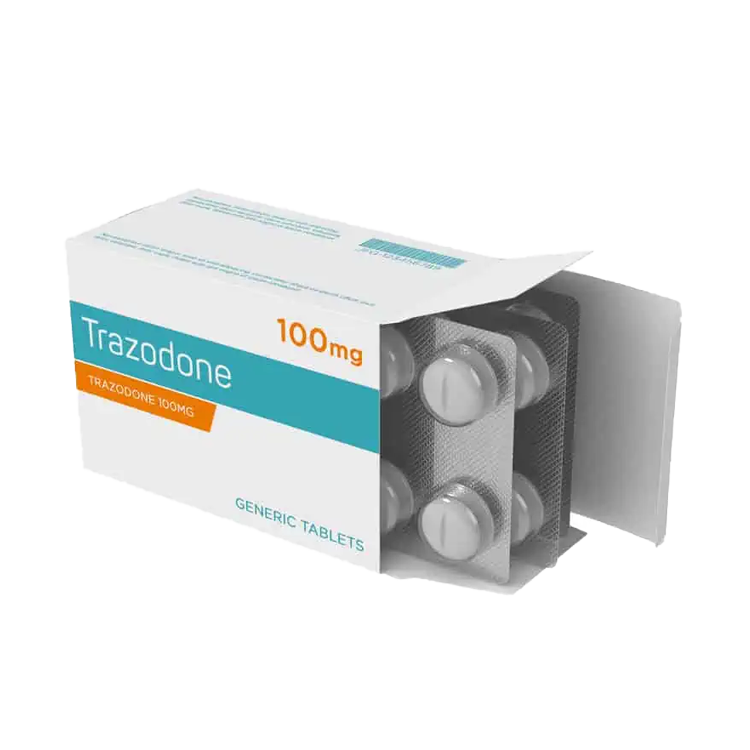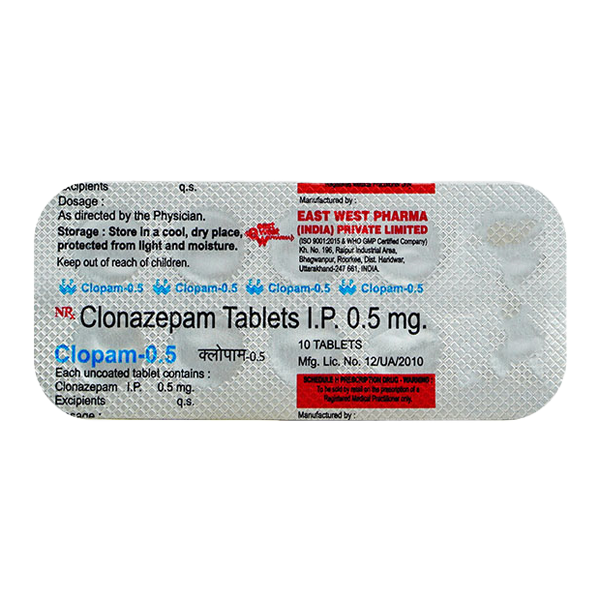Description
Overview
Trazodone is primarily prescribed for depression but is also widely used to manage insomnia, especially in patients with depressive symptoms. Its half-life ranges from 5 to 23 hours, allowing for once-daily dosing in many cases.
Use in Insomnia and Sleep Disorders
Numerous clinical trials have confirmed trazodone’s effectiveness in treating insomnia, a condition marked by poor sleep quality that can lead to serious health risks like hypertension, stroke, and psychological issues. Studies show that trazodone helps reduce the time it takes to fall asleep, extends total sleep time, and improves sleep continuity. It does so by altering sleep architecture—reducing stage 1 and REM sleep, increasing restorative slow-wave sleep (SWS), and addressing early morning awakenings. One study also found that combining cognitive behavioural therapy (CBT) with trazodone (100 mg) enhanced treatment for chronic primary insomnia.
Use in Treating Anxiety
Generalised anxiety disorder (GAD) and related conditions such as panic disorder and social anxiety are characterised by excessive fear and worry. Antidepressants are typically the first-line treatment. Trazodone has shown some effectiveness in reducing anxiety symptoms, particularly in patients with major depressive disorder. However, its impact on panic disorder appears to be modest, whether used alone or in conjunction with panic management strategies.
Dosage and Administration
Trazodone reaches peak plasma concentration about 1 hour after oral ingestion (2 hours with food), though food reduces peak levels without affecting overall bioavailability. Doses between 50–100 mg/day have been shown to improve sleep in depressed patients over a 6-week period, and it is commonly recommended before bedtime. In another study comparing extended-release trazodone (150–450 mg/day) with paroxetine in treating major depressive disorder (MDD), both were found to be effective. Trazodone has also been studied in veterinary settings, with doses ranging from 4 to 12 mg/kg being effective in reducing stress-related behaviours in hospitalised dogs.
Safety
Trazodone has a long-established safety record and was ranked as the 29th most prescribed drug in 2010. Prolonged-release formulations were developed to avoid high peak plasma concentrations, which can lead to side effects. Overdose cases have been reported in both adults and animals, with symptoms such as sedation, hypotension, tremors, and seizures. However, trazodone is considered to pose a lower risk of liver toxicity than other classes like tricyclic antidepressants and MAOIs. Its use in alcohol-dependent patients post-detoxification has shown limited effectiveness for sleep improvement and may even have adverse outcomes.
Side Effects
Common side effects of trazodone include nausea, dizziness, insomnia, dry mouth, headaches, and gastrointestinal issues. It has a lower anticholinergic profile, meaning reduced risk for heart-related side effects compared to older antidepressants. It may also contribute to weight gain and, like other SSRIs, can cause withdrawal symptoms—dizziness, nausea, headache, and lethargy—within a week of discontinuation, typically resolving within 48 hours after restarting the medication.

 STORE OPEN | LATEST UPDATE:
STORE OPEN | LATEST UPDATE:














Reviews
There are no reviews yet.